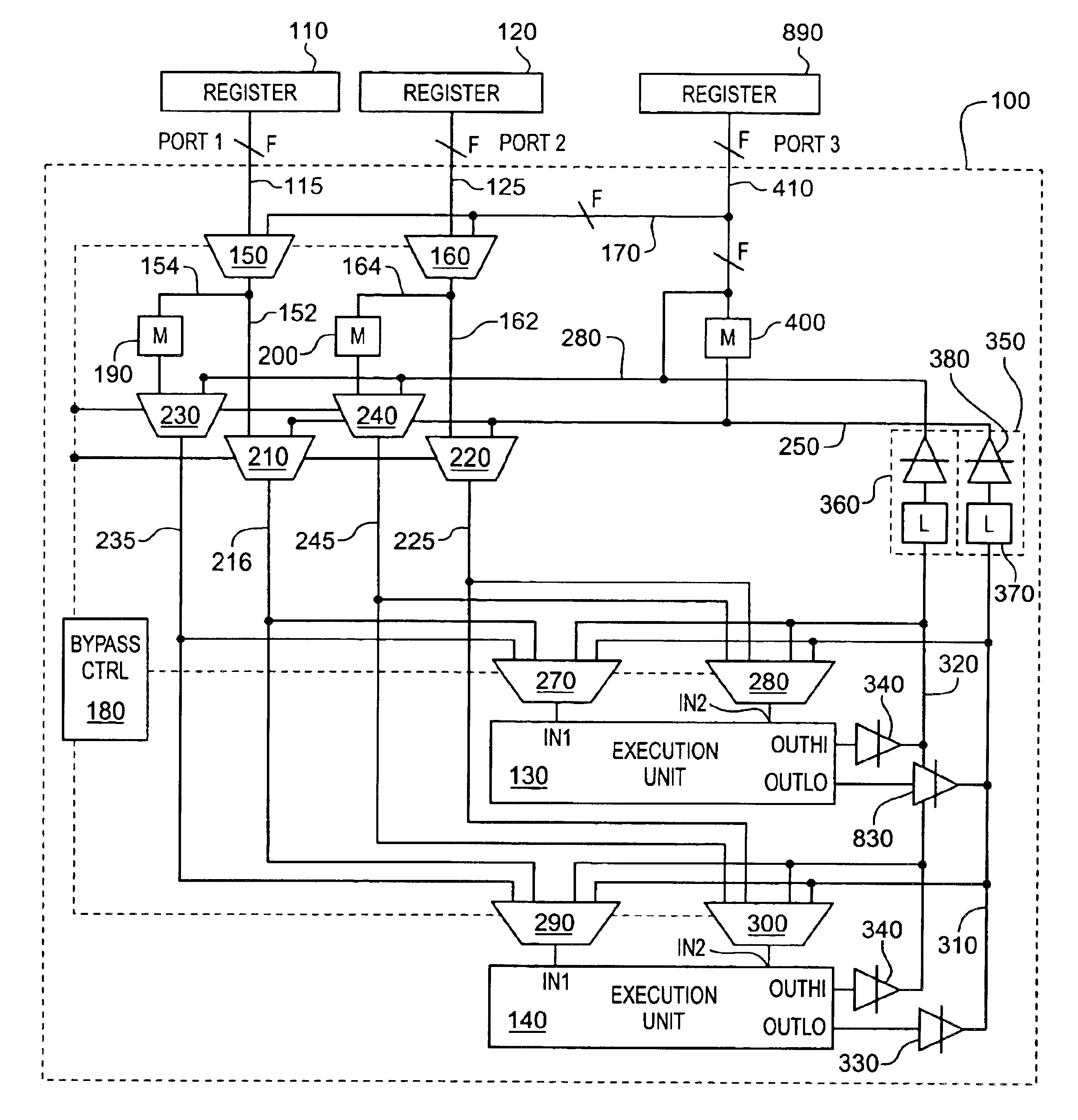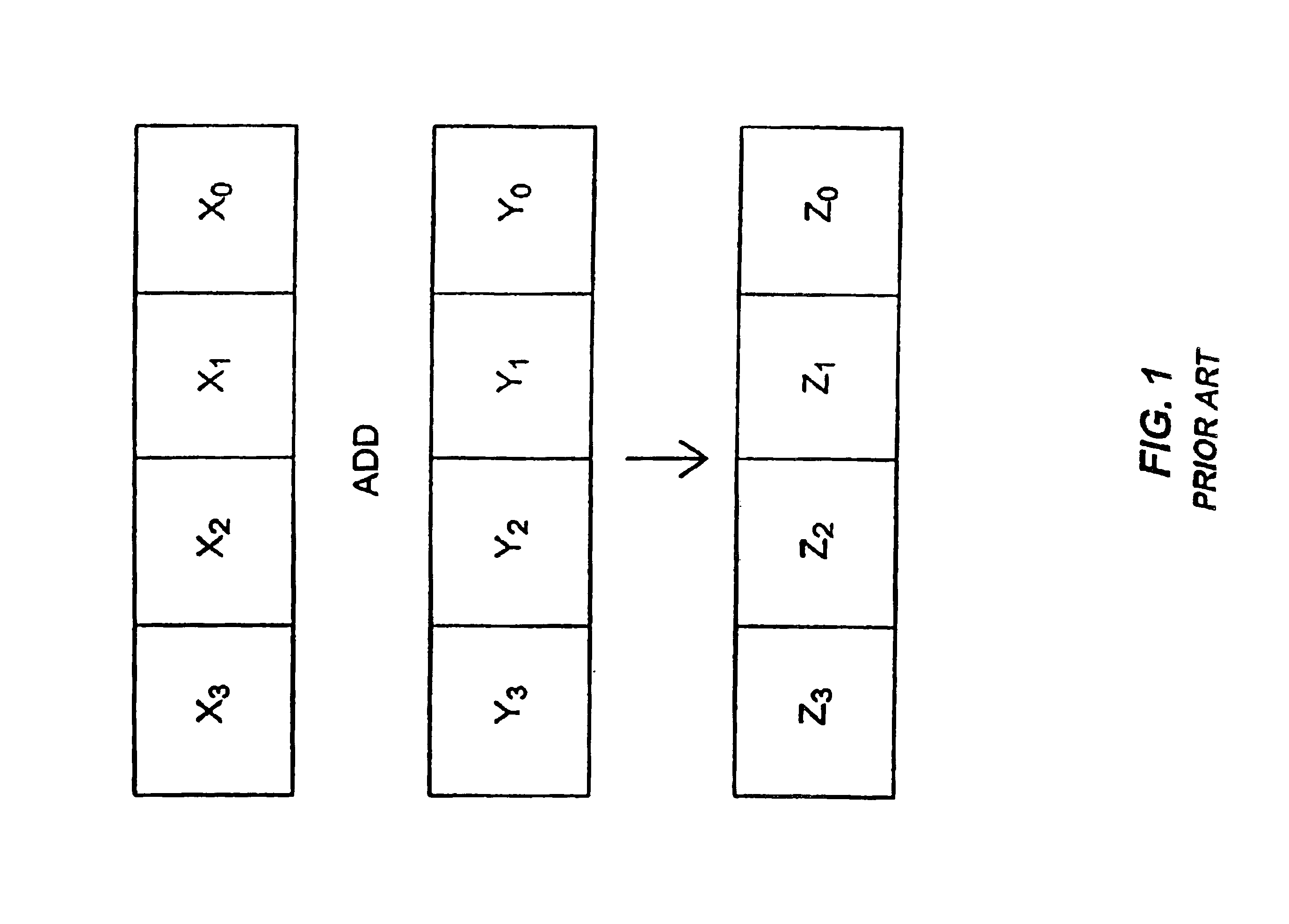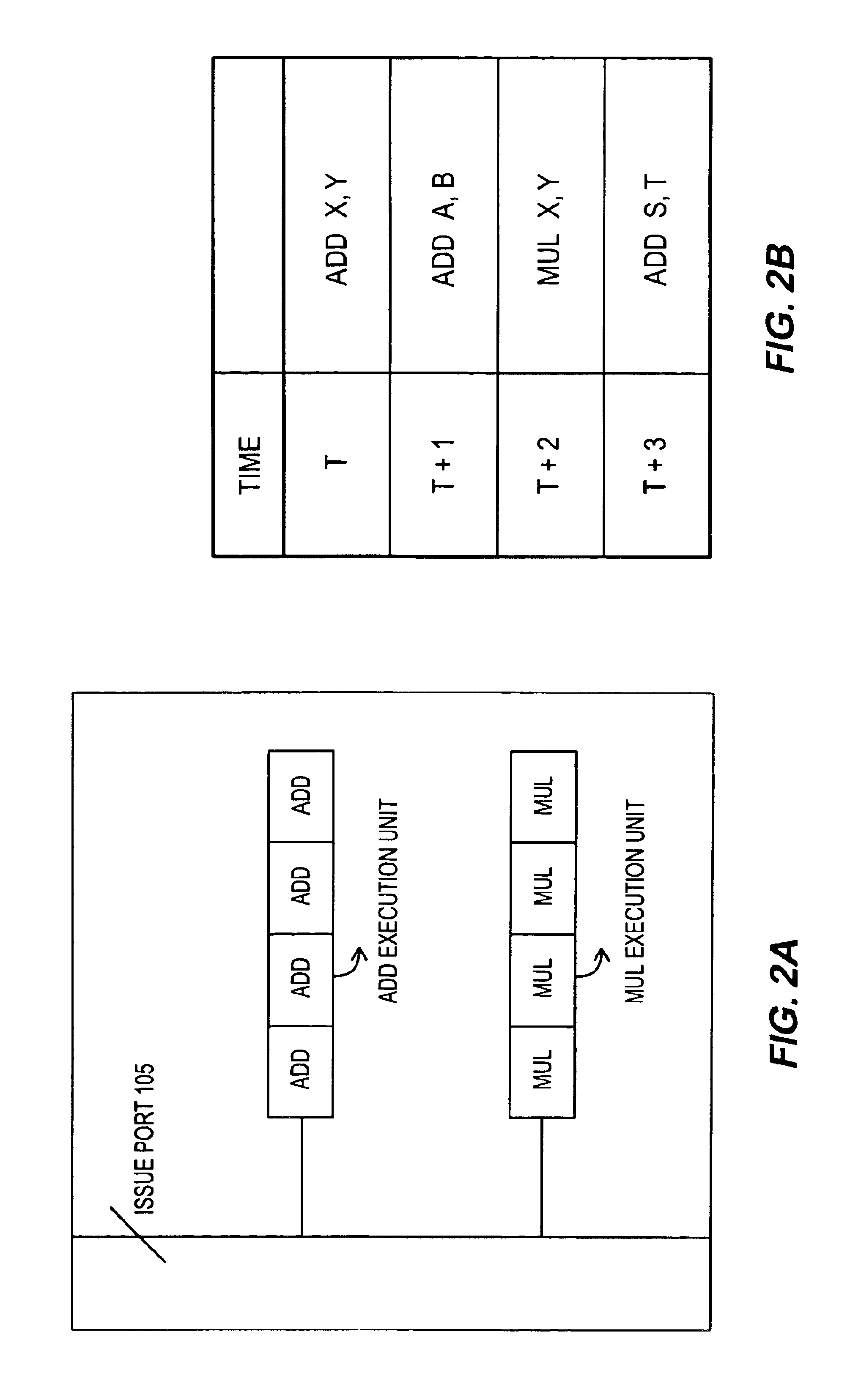Staggering execution of a single packed data instruction using the same circuit
a technology of data instruction and circuit, applied in the field of computer systems, can solve the problems of inefficient utilization of hardware components, large amount of duplicated hardware components,
- Summary
- Abstract
- Description
- Claims
- Application Information
AI Technical Summary
Benefits of technology
Problems solved by technology
Method used
Image
Examples
first exemplary embodiment
[0026]FIG. 4A conceptually illustrates circuitry within a processor according to a first embodiment that accesses full width operands from the logical registers but that performs operations on half of the width of the operands at a time. This embodiment assumes that the processor execution engine is capable of processing one instruction per clock cycle. By way of example, assume the following sequence of instructions is executed: ADD X, Y; MUL A, B. At time T, 128-bits of X and 128-bits of Y are each retrieved from their respective registers via ports 1 and 2. The lower order data segments, namely the lower 64 bits, of both X and Y are passed into multiplexers 402 and 404 and then on to the execution units for processing. The higher order data segments, the higher 64 bits of X and Y are held in delay elements M1 and M2. At time T+1, the higher order data segments of X and Y are read from delay elements M1 and M2 and passed into multiplexers 402 and 404 and then on to the execution u...
second exemplary embodiment
[0065]According to an alternate embodiment of the present invention, the staggered execution of a full width operand is achieved by converting a full width macro operation into at least two micro instructions that each operate on only half of the operands. Although the description below is written according to a particular register renaming method, it will be appreciated that other register renaming mechanisms may also be utilized consistent with the embodiments of the present invention. The register renaming method as described below assumes the use of a Register Alias Table (RAT), a Reorder Buffer (ROB) and a retirement buffer, as described in detail in U.S. Pat. No. 5,446,912. Alternate register renaming methods such as that described in U.S. Pat. No. 5,197,132 may also be implemented.
[0066]FIG. 6A illustrates conceptually one embodiment of a pipeline to perform operations on operands in a “staggered” manner by converting a macro operation into a plurality of micro operations tha...
PUM
 Login to View More
Login to View More Abstract
Description
Claims
Application Information
 Login to View More
Login to View More - R&D
- Intellectual Property
- Life Sciences
- Materials
- Tech Scout
- Unparalleled Data Quality
- Higher Quality Content
- 60% Fewer Hallucinations
Browse by: Latest US Patents, China's latest patents, Technical Efficacy Thesaurus, Application Domain, Technology Topic, Popular Technical Reports.
© 2025 PatSnap. All rights reserved.Legal|Privacy policy|Modern Slavery Act Transparency Statement|Sitemap|About US| Contact US: help@patsnap.com



